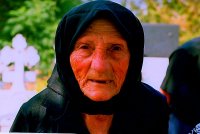Welcome to tCr
- Perhaps no other scrap of land has been more contested since antiquity. Cyprus is a large island nestled between the coasts of Turkey and Lebanon, which has Greek origins dating back centuries. Cyprus was in the news recently, when it became the latest chapter in the creeping Eurozone jitters. Yet there was precious little mention in the recent coverage about the lingering "Cyprus problem."
To this day, some 30,000 Turkish troops occupy the northern part of the island; and a longstanding United Nations peacekeeping force patrols the buffer zone between Greek and Turkish Cypriots. Peace has never been officially declared in Cyprus since a ceasefire in 1974; and today the two sides appear to be as far apart as ever. Yet as soon as the tide of evacuees ebbed last summer, the world’s attention turned away from Cyprus again.
Whether you know a little or a lot about Cyprus, I hope you’ll find something to interest you in The Cyprus Report, or as I refer to it, “tCr.” I started this blog after returning from Cyprus, where I spent the summer of 2005 on a journalism fellowship from The German Marshall Fund of the United States. To learn more about my professional credits, visit my page on LinkedIn.You’ll find my stories about Cyprus that ran in the International Herald Tribune in the second list of links below. But if you really don’t know much about the place, you might want to start with the first list of links.
CYPRUS 101
The entire island has been divided since 1974 along the U.N.-monitored “Green Line,” which separates the Greek and Turkish Cypriots. If any of that was news to you, then begin your exploration of tCr with the three-part introduction below.
Life Beyond the Green Line (Introduction)
Icons, Copper and Conquest (Until 1950)
The Cyprus Problem (Since 1950)
Click here to learn unfamiliar terms
- the Greek and Turkish sides in 2003. For example, the news anchors pictured above are part of a nightly broadcast by both Greek and Turkish Cypriot journalists. I covered these trends for the International Herald Tribune, and the links below are to IHT’s website.
“We” Tries to Unite Cyprus on the News
Hostility Persists on Divided Cyprus
 | REMEMBERING 1974: Every summer, Greek and Turkish Cypriots mark the anniversary of the island’s division in starkly different ceremonies. The woman pictured at left was at a |
- memorial service on the Greek side of the island for her son, who died during an attempted coup that was backed by Greece; while on the other side of the island, Turkish Cypriots were protesting.
Remembering a Greek Tragedy
How Happy To Say I’m a Turk
In Their Own Words: The Summer of Pathos
| THE POLITICS OF GRIEF: Hundreds of Greek and Turkish Cypriots have been missing for decades. Some of them are only “missing” in the broadest sense of the word, because eyewitnesses came forward long ago with accounts of how they died. But their images still linger on makeshift shrines like the one in this photo essay, which I dubbed the “missing persons tree.” It stood for months across the street from the city |  |
Photo Essay: Missing in Plain Sight
 | THE BUFFER ZONE: The United Nations and the European Union have teamed up to remove some of the last landmines on EU soil. On my first morning in Nicosia, I snapped this photo essay of some of the controlled |
- detonations from high atop a mountain in the arid strip of land that divides the Greek and Turkish Cypriots.
Photo Essay: Demining the Dead Zone
| THE TURKISH CYPRIOT ENIGMA: The question of just who is—and by implication, who is not—a Turkish Cypriot has taken on political urgency. There can’t be a workable peace deal until both Greek and Turkish Cypriots can arrive at a satisfactory answer. The first link below explains the origins of the Turkish Cypriots, and the various types of Turkish mainlanders who have settled on the northern part of the |  |
 | island for years. The third link—well, what can I say? The picture at left is the PG version. A team of footballers (that's soccer players to us yanks) stripped to their shoes and socks for a photo-op protesting their exclusion |
Who Are the Turkish Cypriots?
In Her Own Words: Neshe Yashin
Snapshot: Embargo This
| SRI LANKA TO CYPRUS: On Sunday mornings, the Greek side of Nicosia’s Medieval-walled city is awash with saris. Guestworkers from Sri Lanka live in the most historic part of the island’s divided capital city. But not for much longer. As a new EU member, Cyprus has a few years to adjust its employment laws. After that, the women you see in this photo essay—skirting through Nicosia’s narrow cobblestone |  |
Photo Essay: The Vanishing Sari
 | BEYOND THE GREEN LINE: Follow in my footsteps, as I trek back and forth between both sides of Nicosia, the divided capital city of Cyprus. This photo essay explores the remnants of the island’s turbulent history—from crumbling facades to the 1970’s fixtures in some hotel rooms. And yes, that backpack pictured at right was my constant companion. |
Photo Essay: A Tale of Two Hotels
tCr





